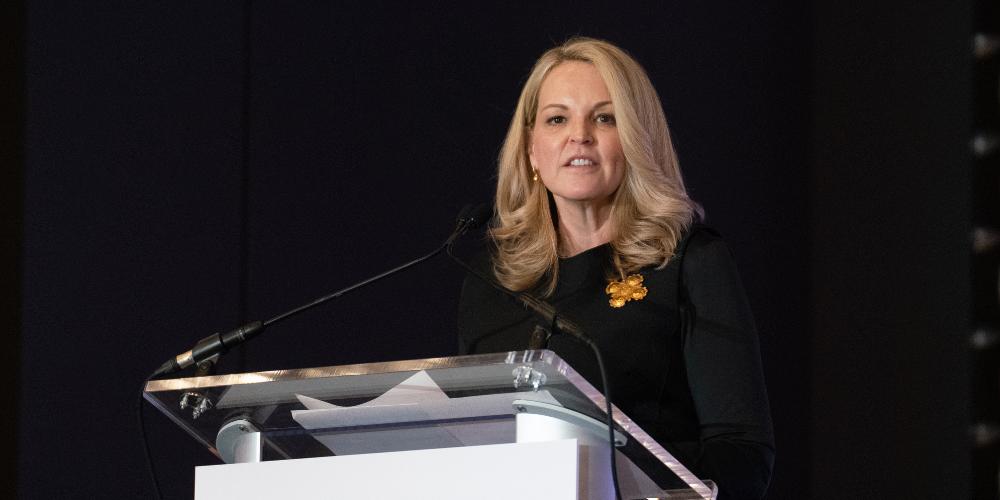How Agios Partnered with the Sickle Cell Community to Design the RISE UP Phase 2/3 Trial and Awareness Campaign
Holly John, Senior Director of Global Patient Advocacy and Medical Affairs at Agios Pharmaceuticals, shares insights from the company’s partnership with the sickle cell community on the RISE UP Phase 2/3 trial of mitapivat in sickle cell disease

What is the RISE UP campaign and what you presented at Patients as Partners?
Sickle cell disease affects more than 3 million people globally, disproportionately impacting Black individuals and other racial and ethnic minority communities. Despite its prevalence, sickle cell disease research has historically been deprioritized, leaving patients with limited approved treatment options.
Clinical trials are essential for developing and evaluating new therapies for sickle cell disease patients. However, minority populations have been historically underrepresented in clinical research, raising concerns about equitable access and the effectiveness of treatments across diverse patient groups.
Agios set out to change this by partnering with the sickle cell community to co-design the RISE UP Phase 2/3 trial. We wanted to understand their concerns and their frustrations and pull their voice into the process, moving beyond research for patients and into research with them.
The collaboration directly impacted key trial parameters, including study duration, post-study access to treatment, study endpoints, eligibility criteria, assessments and procedures, logistics (e.g., visit frequency and locations), and pain reporting. The community also was involved in shaping RISE UP recruitment strategies and awareness efforts, directly contributing to the trial’s patient recruitment success.
"The most impactful lesson was the value of treating patients as partners, not consultants."
What was the biggest lesson for you from this project?
The most impactful lesson was the value of treating patients as partners, not consultants. This meant engaging patients before protocol development, to ensure their input was woven into key decisions rather than solely seeking endorsement at the end of planning. It also meant showing patients exactly how their feedback was incorporated, and, when it wasn’t, providing a clear rationale while addressing any questions.
This approach not only deepened trust but also translated into recruitment success: The Phase 2 portion of the RISE UP clinical program met its enrollment goals, while the Phase 3 portion of the trial enrolled over 200 patients worldwide in just over a year – an extraordinary achievement in a therapeutic area where 16 clinical studies have closed in the past two decades due to slow recruitment.
When you work with patients as partners, they show up.
What’s been the impact for your team and your patient partners?
RISE UP was an important reminder of how amplifying patient voices can strengthen our mission to develop and deliver innovative medicines that transform lives. And, for the patients we worked with, seeing how their voices shaped decisions inspired them to become powerful advocates, reinforcing their role as essential partners in advancing care.
"It’s important to measure your success. Beyond enrollment numbers, engagement metrics are clear demonstrations of how your actions are building trust."
What were the lessons learned from working with internal study teams and doing the change management required?
Our team has always held the mentality that partnering with patients makes us a better drug developer. As we approached RISE UP, we collaborated internally to align on how best to meaningfully incorporate the patient voice into our work. This led to the first RISE UP workshop, where we learned a great deal from patients, including the impact of fatigue on daily life, the logistical challenges of participating in clinical trials such as travel and accommodations, and many other important insights. This feedback directly influenced protocol adjustments aimed at eliminating these barriers, to support the community.
How did learning about something like fatigue from patients change the protocol?
The patient perspectives we collected fundamentally impacted decision-making for the trial. Insights from the clinical trial design workshop led to revised eligibility criteria and the inclusion of additional patient-reported outcomes – such as fatigue and pain (beyond sickle cell disease pain crises) – to better reflect the lived experiences of this community.
How else did patient feedback directly impact the trial?
Beyond the trial’s design, Agios also collaborated with patients on an awareness campaign to educate the broader community about RISE UP. Before developing the campaign’s creative direction or messaging, Agios met with this group to discuss how they wanted to be represented. They also shared examples of various disease-awareness campaigns to gather input on what patients preferred or disliked.
The patients emphasized that they wanted to be portrayed from a position of strength, not weakness. As a result, the campaign profiled individuals living with sickle cell disease – often referred to as “sickle cell warriors” – and depicted them wearing boxing gloves to symbolize their strength and resilience, reflecting how they see themselves.
This authentic representation helped patients feel seen, heard, and inspired to engage. Golie, a person living with sickle cell disease who contributed to the campaign’s messaging and execution, shared: “One of the main things we wanted was for sickle cell warriors to be presented in a position of strength and not weakness. Many of us heard from other sickle cell warriors about how excited they were about the campaign and how happy they were that it took our feelings into account.”
The resulting digital outreach and social media efforts drove approximately 278,000 users to the RISE UP website, and a campaign video launched on World Sickle Cell Day (June 19) amassed over 3 million views in the first six months. These awareness efforts also led to an average of 2-3 daily views on ClinicalTrials.gov.
"Always circle back. Let patients know how their feedback was incorporated, and if it wasn’t, let them know why. That elevates trust immensely and shows appreciation for their time and their expertise."
What do you think other biopharma organizations can take from your work and apply to their own?
Patient engagement should begin early and extend throughout the development lifecycle. Agios’ experience showed how integrating patient insights from the outset creates meaningful partnerships that can strengthen outcomes.
We also learned the importance of building relationships at both the national and local level, to ensure your communications are authentic and credible.
Finally, it’s important to measure your success. Beyond enrollment numbers, engagement metrics are clear demonstrations of how your actions are building trust.
Talk more about establishing metrics.
Our patient partners encouraged us to use social media, because that’s where they go for information. Tracking those metrics showed us we were truly engaging with the community.
We also use metrics to track our broader engagement efforts, including the number of community touchpoints, new patients reached, and how many newly engaged patients went on to become thought leaders.
In rare diseases, the numbers might look small, but they can have a significant impact.
What would be your advice for peers about engaging patients early in the protocol design and development phase?
Engage as early as possible. Collecting patient insights from the get-go is critical – it takes time and commitment to determine the best approach for connecting with patients.
Listen to patient feedback that challenges your assumptions and be prepared for that patient feedback to change your way of thinking.
Always circle back. Let patients know how their feedback was incorporated, and if it wasn’t, let them know why. That elevates trust immensely and shows appreciation for their time and their expertise.
Finally, integrate patient voices across the product lifecycle. When patients see how their voices shape decisions, they become powerful advocates and essential partners in advancing care.









